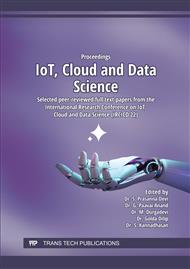p.392
p.398
p.409
p.418
p.426
p.433
p.447
p.457
p.462
Stock Market Portfolio Prediction Using Machine Learning
Abstract:
A Stock refers to a share of ownership in a particular company. An investor owns 1 percent of the company if they purchase one part of its ownership divided into 100 parts, each equal to one share. Stock exchanges are run by an automated matching system driven by order demand. Stock prices are defined as “at any particular time, how many buyers and sellers available for the same stock in the market. If the number of buyers is more than sellers, then stock price becomes high” and vice-versa. The stock market depends on many factors like open price, close price, high and low price. Many researchers have tried to predict the stock prices using various ML (machine learning) techniques such as ARIMA model, linear regression, RNN, etc. Because of the uncertainty in stock market, simple models cannot yield any genuine results. The limitations with models like ARIMA, TSLM have been traced in this paper. This paper builds a web application using a library named Streamlit and integrate the stock prediction model. The main objective of this paper is to build a LSTM (Long-Short Term Memory) based RNN (Recurrent Neural Network) model using opening prices in order to get one of the most accurate stock rates.
Info:
Periodical:
Pages:
426-432
Citation:
Online since:
February 2023
Authors:
Keywords:
Price:
Сopyright:
© 2023 Trans Tech Publications Ltd. All Rights Reserved
Share:
Citation:


